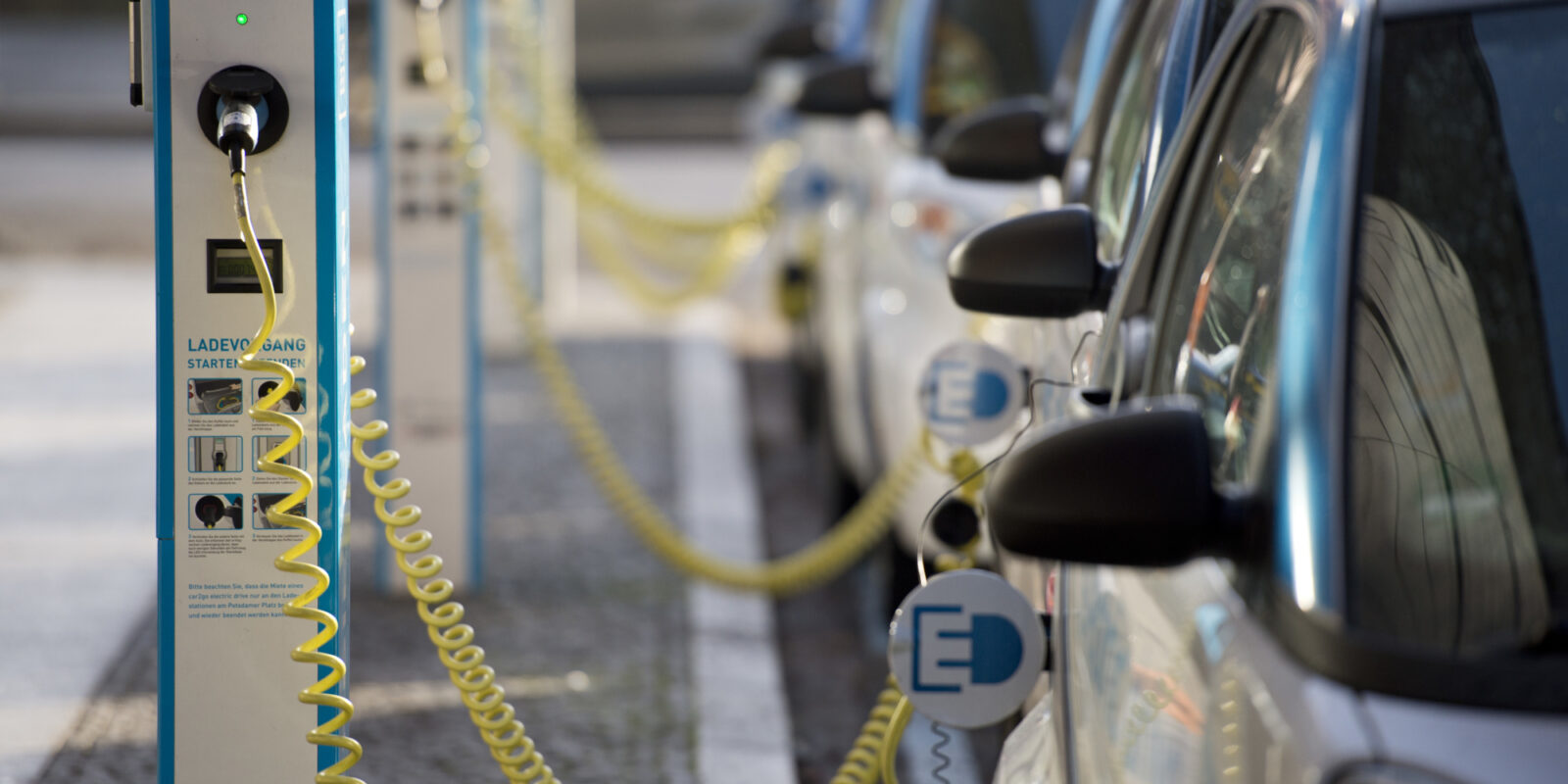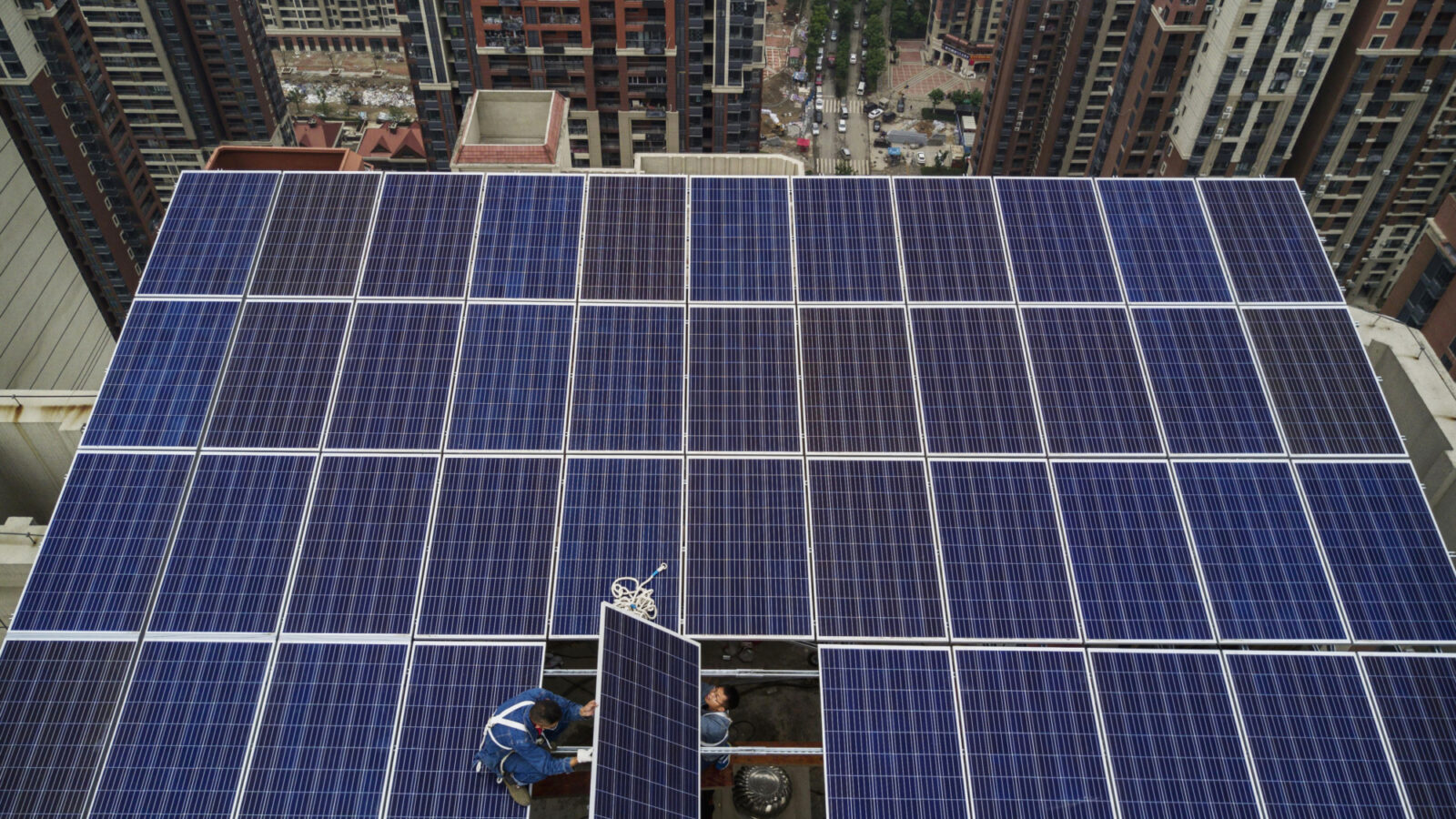Flexibility: Shifting the Power Balance
As renewables become a large share of the global energy mix, greater electricity system flexibility will be critical and will originate from the small scale, write Daniel Quiggin and Antony Froggatt.
Collection The Future of Electricity

Electric vehicles stand charging in Berlin, Germany. Image: Michael Gottschalk/Photothek via Getty Images.
Over the past decade, the electricity sector has experienced a profound disruptive shock especially in the European Union, Australia and parts of North America. Once powerful utility companies are struggling in the current market and are restructuring to survive. The change was triggered by the rise of renewable energy, slower than expected demand growth and, in many jurisdictions, market reform.
As they seek to tackle climate change, many countries have seen renewables in the power sector as the spearhead of their national action plans. The International Energy Agency forecasts that ‘solar PV and onshore wind together represent 75 per cent of global renewable electricity capacity growth over the medium-term’.1 Bloomberg New Energy Finance also estimates that by 2040, nearly three-quarters of the $10.2 trillion invested in new power-generating capacity will be in renewables.2
While this renewables rollout is a key part of global climate policy, the challenge is that the costs associated with managing the system start to escalate once renewables exceed a 30 per cent share of generated electricity. Unless properly planned for, the growth in electric vehicle use and electric heating could further amplify these ‘system integration costs’. They include the cost of holding fossil fuel power plants in reserve for periods of low renewable supply, grid upgrades and the dumping of power from renewables when system constraints are reached.
When Germany’s former environment minister in 2013 talked about the €1 trillion price tag of the country’s energy transition, he was referring to such costs.3 While his accounting was somewhat opaque – some €300 billion are expected to cover the cost of backup capacity and grid upgrades4 – he put the spotlight on what critics call the ‘hidden costs’ of renewables.
So, as renewable energy pushes beyond 30 per cent, and as a growing number of cars and domestic-heating systems begin to add to power usage, how can governments ensure electricity is affordable? The answer is ‘flexibility’.
A raft of technologies already entering the market, promise to radically enhance the flexibility of electricity systems, helping contain system integration costs while accelerating the low-carbon transition. If they succeed, the flexibility revolution could turn assessments, such as that above of Germany’s future liabilities, on their head.
But what does this mean in practice? Grid operators and power companies would pursue a diverse range of flexible, decentralized, modular technologies. Regulatory frameworks would prioritize and incentivize investment in these areas, and would also encourage alternative business models. And in this future, our reliance on large fossil fuel power plants would fade, along with the utility business models that have long been based on a centralized power system.

Chinese workers work on a solar panel project on the roof of a 47 story building in Wuhan, China. Image: Kevin Frayer via Getty Images.
Today, electric vehicles (EVs) and lithium-ion batteries are the best examples of how flexible, decentralized approaches are challenging the business models of traditional utilities. In May 2018, 2GW of battery storage and dynamic EV charging was announced in the United Kingdom, equivalent to half the generating capacity of the country’s largest power station.5
Lithium-ion batteries have fallen dramatically in cost, but they also bring new flexibility to the power grid. Their ability to respond quickly to a surge in demand reduces the need for ‘peaking’ gas and coal power plants. Meanwhile, the modular nature of battery systems means the capacity of battery facilities can easily be adjusted for various functions and locations. It is not always a straight choice between batteries and fossil fuels, however. General Electric has developed a new system with ‘hybrid electric-gas turbines’ that enables batteries to be integrated into its existing power stations, helping to balance the grid. Southern California Edison has already retrofitted two power stations with this technology too.6
Rapid take-up of EVs could further expand flexibility. Smart charging (for example at night) could help reduce demand during peak hours. Using powerful new methods of predicting wind speeds and solar irradiance, EVs will charge when renewable energy is abundant. EVs will also discharge power back to the grid, just as a stationary storage battery would do. The system flexibility this Vehicle-to-Grid (V2G) charging could add is enormous. To match a typical power station for one hour would require around 83,000 EVs depleting their battery banks by only 10 per cent. In the first three months of 2018, 17,574 plug-in EVs and hybrids were sold in Germany alone.7 With smart EV charging, the United Kingdom could benefit from 11GW of additional flexibility by 2030,8 equivalent to 18 per cent of current generating capacity.
Decentralized flexibility is attracting new powerful commercial actors to the electricity sector. Google and Amazon are in talks with regulators to introduce time-of-use tariffs to enable flexible demand at the household level.9 In order to keep pace, utilities are acquiring and investing in start-ups. For instance, Centrica paid £65 million in 2015 for AlertMe, a home energy management system that enables the smart control of wirelessly connected devices and appliances.10
Examples of Centralized Flexibility
While flexibility can be provided through centralized systems, what is new is the ability of decentralized technologies to balance the electricity system. A combination of options like demand flexibility, smart EV charging and household storage can collectively be thought of as decentralized energy resources (DERs). In the near future, they will challenge the stranglehold of power utilities on providing essential grid balancing services. Meanwhile, a new market participant is coming to the fore in the shape of the ‘prosumers’: the electricity consumers who sell power and balancing services back to the market from their solar panels, EVs, batteries or smart appliances. For them, what are the best ways to measure and aggregate the services they can provide to the market?
In response to the growing number of potential prosumers, a new business model is emerging: energy service platforms for DER-owning consumers. These platforms connect and aggregate multiple consumers and producers, providing tools, services and rules to enable their interaction in newly created electricity market places much like the platforms of Uber, AirBnB and Ebay. Such platforms already exist for non-domestic electricity consumers. Kiwi Power, Enernoc and Flexitricity are aggregator platforms to which commercial and industrial consumers already allow third-party control of their systems, enabling their participation in flexible demand markets.
Network utilities are beginning to recognize the opportunities in this space. Commonwealth Edison, a utility in the United States, wants to refocus its business model around energy service platforms.11 This is in part driven by the need to create new distribution system operators (DSOs) so that energy service platforms can operate efficiently.12 13 The difference between a DSO and the traditional distribution network operator (DNO) is subtle but important. DNOs are currently responsible for overseeing connection of DERs but, unlike their transmission network counterparts, they do not coordinate the dispatch of system resources on the network.14 DSOs would therefore be well placed to unlock flexibility at the household level.

New homes in San Ramon, California are sold with integrated solar panels. Any surplus power generated by the solar panels is kicked back into the utility's grid with power credits accruing to the homeowner. Image: Robert Nickelsberg via Getty Images.
Electricity systems will require new regulatory frameworks and policies. New York’s Reforming the Energy Vision is a progressive set of regulatory and policy reforms that incentivizes distribution utilities to create new marketplaces, sell system data, charge transaction fees and create flexibility. Under it, the distribution utilities become distribution system platform companies, equivalent to a combined DNO and DSO – the energy service platform between suppliers and consumers of electricity.
Falling renewables technology costs are enabling the decarbonization of the power sector at a pace unimaginable a few years ago. However, this will only occur if new governance frameworks promote new forms of flexibility across the system. In times of rapid change, there will always be winners and losers. Working with new, agile market players could help traditional utilities retain value – but only if they embrace the extent and pace of the transformations enabled by decentralized flexibility.






